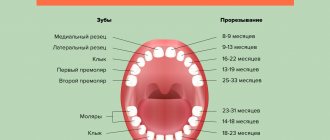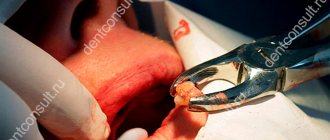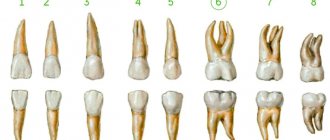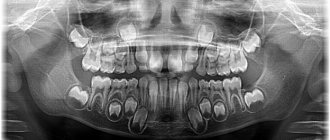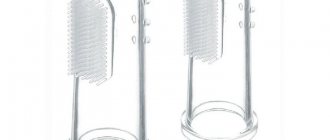In more than 90 percent of cases, a runny nose occurs as a result of an acute respiratory viral infection (ARVI), which children suffer quite often, because their immune system is just beginning to become familiar with the viruses familiar to adults and learns to fight them. During this “training” and “struggle”, standard symptoms of ARVI develop - runny nose, sore throat, fever, weakness, drowsiness, headache. A healthy child attending kindergarten can get ARVI up to seven to ten times a year. If it goes well without complications, then there is usually nothing to worry about.
What does “standard runny nose with ARVI” mean?
It all begins, as a rule, with nasal congestion, the appearance of clear watery discharge from the nose, and frequent sneezing. Gradually, the discharge becomes more viscous, but still remains transparent (mucous discharge). Further - even within the framework of the most common acute respiratory viral infection - the nasal discharge thickens and acquires a yellow, green or even brownish color - this is due to the normal course of the inflammatory process, the immune response and the arrival of leukocytes “on the battlefield”. This discharge can persist for about three days, and then becomes transparent again and disappears completely around the tenth day of illness. This type of runny nose is harmless and usually does not require any additional treatment other than symptomatic treatment.
Nasal hygiene
Physiological runny nose does not require correction with medications. At the same time, it is necessary to help the baby get rid of excess mucus, which makes nasal breathing difficult. For this purpose, cotton swabs moistened with saline are used. They are placed in the nasal passages and then removed with twisting movements.
Mechanical or electric aspirators are more effective. The Aqualor Baby aspirator is easy to use. The innovative mucus capture system in the Aqualor Baby aspirator ensures a hygienic procedure - during aspiration, mucus accumulates in a special reservoir. The comfortable mouthpiece has teeth holders, making the suction procedure convenient. The ergonomic body has a special recess for easy grip - the aspirator does not slip out of the hand during the procedure.
A few minutes before the procedure, 2-3 drops of a sterile isotonic solution are instilled into the nose, preferably one based on sea water, such as Aqualor Baby spray or drops. This helps to thin the exudate and dissolve crusts and clots, which increases the effect of aspiration. Usually the procedure is carried out 3-5 times a day.
What is this symptomatic treatment? What to do if you have a runny nose?
In case of acute runny nose associated with ARVI, our task is to alleviate the symptoms that bother the child, while the body itself copes well with the viral infection. To do this, we start with the simplest measures - drinking enough water, humidifying the air in the room and regular ventilation. You can use regular (isotonic) saline solutions to thin the viscous discharge, moisturize and improve the functioning of the irritated nasal mucosa. After irrigating or rinsing the nasal cavity with saline solutions, you need to evacuate the contents - older children can blow their nose themselves, but younger children will need a nasal aspirator or rubber bulb for this.
In case of severe swelling, vasoconstrictor nasal drops can help, but they should be used for no longer than three (maximum five) days, only if necessary and strictly observing the age-specific dosage. According to the US Food and Drug Administration (FDA), children under six years of age are not recommended to use these drops at all, and are best avoided until age 12. This is due to the fact that they provide only temporary relief, do not affect the outcome of the disease and can cause unpleasant side effects (medicinal rhinitis, tachycardia, increased blood pressure, etc.), but sometimes without them the child cannot sleep or eat - in In this case, their use is justified.
Often, to combat swelling in the nose, a hypertonic saline solution, where the salt concentration is slightly higher than in an isotonic solution, is enough - it is not as powerful as vasoconstrictor drops, but is safe and does not lead to the development of side effects. You can use this solution from one year onwards.
Let's look at common reasons
It is worth noting that the inside of the nose is lined with mucous membrane. It systematically produces, through the protein mucin, a moderate amount of secretions that are useful in a protective sense. Good discharge has a liquid consistency. But when a child gets sick, the amount of mucin increases significantly, so more mucus is produced.
The amount of mucus increases if:
- The baby choked on formula or milk while feeding.
- The production of liquid masses increases with overheating or hypothermia.
- An acute respiratory infection appears.
- Baby teeth are coming through.
All this “treatment” sounds frivolous, but what if the runny nose “goes down” and turns into bronchitis?
Here you need to understand that a runny nose does not go away. Whether bronchitis (tracheitis, pneumonia, etc.) will develop or not does not depend on how many different drops you put into the nose and antibiotics you take orally - early or excessive prescription of unnecessary drugs will not protect the child from the likelihood of developing complications and will not reduce this probability. The determining factor here is the so-called tropism of the virus, that is, which cells and tissues of our body this particular virus prefers.
The particularities of the anatomy and physiology of a particular child also play a role - for example, someone tolerates ARVI easily, getting away with only a runny nose, while others have a tendency to otitis media, bronchial obstruction or false croup. At the same time, any child is not immune from the development of these complications, regardless of the intensity of treatment for ARVI - we cannot influence this, but we can contact a specialist in time if we have doubts or suspicions about the development of complications.
Treatment of cough and runny nose in infants
Unfortunately, infants are susceptible to a wide variety of diseases. Very often they suffer from a runny nose and cough. It is extremely important for young parents to know how to react correctly to their appearance, and also in what cases they should definitely contact a pediatrician.
Let's talk about coughing first. In children under one year of age, in most cases, cough is a symptom of ARVI, and accordingly, it is treated like a cold. But a viral infection is far from the only cause of cough in your baby. It can be caused by a variety of diseases, such as whooping cough, tracheitis, laryngitis. A cough can be allergic in nature or become a harbinger of pathologies of the gastrointestinal tract or a number of heart diseases. In addition, coughing sometimes occurs as a result of normal physiology. So, it may appear if dust gets into your child’s respiratory tract. If your baby's sinuses are clogged with dried mucus. If he has profuse salivation or suffers from bitter belching.
With a runny nose, a morning cough in the morning is normal and nothing much to worry about. But if a child under one year of age develops a barking cough, a fever, or shortness of breath; if coughing attacks begin suddenly and do not go away for a long time, wheezing occurs, and also if blood is visible in the sputum or it is green in color, then you should immediately contact your pediatrician.
The appearance of a runny nose in a baby can also become a big problem for parents - after all, until almost the age of four, children do not know how to blow their nose.
For infants, even slight swelling of the nasal mucosa is a rather serious problem, because it becomes very difficult for him to breathe through the already relatively narrow nasal passages. It is difficult for the baby to suckle at the breast because he has to breathe through his mouth. The baby becomes capricious, sleeps poorly and is malnourished. As a result of mouth breathing, infection can affect the lower respiratory tract.
Treatment of cough in infants, as well as treatment of runny nose in infants, will be most effective if parents do not allow panic and irritation, but strictly follow all the pediatrician’s instructions, easing the condition of the sick baby as far as possible.
For better mucus removal and easier breathing, you should periodically change its position in the crib. You will have to carry the baby in your arms more often. A massage will significantly ease his condition. At this time, the child needs plenty and frequent drinking, which will help quickly remove all toxins from the body. The air in the room should be fresh and humidified. The ideal temperature for a child would be 22 degrees. Until six months, when treating a child for a runny nose and cough, rubbing should never be used. Until complete recovery, water procedures should be excluded from the baby’s daily routine. It is also highly undesirable to wrap it up.
And remember, by following all the specialist’s recommendations, you will quickly and successfully overcome these ailments in your baby!
How can you understand that this is no longer just a viral runny nose, but a bacterial complication?
The most important thing we look at is the clinical manifestations. Here are the signs that should alert you to a bacterial infection and make you see a specialist:
- by the tenth day, persistent manifestations of a runny nose with yellow/green discharge remain without improvement,
- after a temporary improvement, deterioration occurs again (increased discharge, increased body temperature, pain in the face),
- at the very beginning of the disease, pronounced symptoms immediately appear: body temperature 39C or more, profuse purulent discharge from the nose, pain in the face - and these symptoms last for three to four days in a row.
The presence of one of these three points in a child is a reason to see a doctor first. If your doubts are confirmed, then, most likely, treatment will require systemic antibacterial therapy. The appropriate drug, frequency of administration, duration and dosage will be determined by the doctor, taking into account various factors. And if an antibiotic is needed, then “internally” - it cannot be replaced with antibacterial nasal drops, but can only be supplemented.
Step-by-step instructions for using a nozzle ejector
Today, many pediatricians agree that the nozzle ejector is inconvenient, but they still have to use it. If you cannot achieve a positive result, take a small pear for these purposes.
- To carry out the procedure, you need an aspirator, as well as a syringe, of course, without a needle.
- The tip of the syringe should be inserted into the right nostril and pull the part of the syringe that extends towards you.
- When the syringe is filled with mucus, you need to remove it from the nose and rinse thoroughly with warm water. It's good to use soap. Then do everything identically with the left nostril.
- If you use a syringe or nasal aspirator, they must be perfectly clean.
- Before inserting the bulb into your nose, you need to squeeze it with your fingers. As the bulb opens, nasal mucus begins to be sucked into its cavity. The baby's breathing will be much freer after this.
- Today you can still use a mechanical aspirator, which is equipped with a tube. It has a good length and the tip is soft. It is inserted into the nose, and on the opposite side of the tube, one of the parents draws in air through their mouth. This procedure pumps out the mucus.
- Among modern devices for removing mucus, an electronic aspirator stands out. He pumps out the snot on his own.
Remember that an excessive amount of mucus makes breathing difficult, causes snoring, and impairs the process of saturating the child’s body with oxygen. If the child remains painful, lethargic and sleepy after the procedures, consult a doctor immediately.
Advantages of the Aqualor Baby children's series
To care for the nasal cavity of a newborn, it is advisable to use ready-made preparations, the sterility of which is guaranteed. Aqualor baby drops and spray with a “soft shower” attachment contain natural sea water and do not contain artificial additives, so they can be used without harm from the first days of life both for hygienic procedures and for the treatment of rhinitis of various etiologies.
Natural microelements of sea water stimulate the formation of local immunity, increasing the resistance of the nasal mucosa to microorganisms.
How to rinse a child's nose with saline solution? When using drops, the baby is placed on his back and, without plunging the tip of the bottle deep into the nose, squeeze 2-3 drops into each nostril. When using a spray, the solution is injected into the child's nasal cavity with the body in an upright position, preferably sitting in the arms of an adult (if the child already knows how to sit). In this case, the child's head should be straight and slightly tilted forward. The tip of the balloon is inserted into one of the halves of the nose, pressed on the sprayer and held for several seconds, thus rinsing this half of the nose. Then repeat the procedure with the other half of the nose.
The procedure can precede aspiration or be carried out in the morning and evening as part of daily hygiene. In conditions of dry, heated air, it is advisable to periodically irrigate the nasal passages using a spray.

